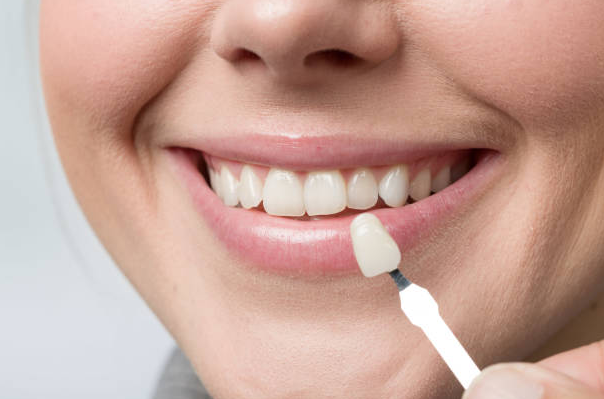In a world where first impressions often rest on a smile, dental veneers—an aesthetic treatment promising the perfect smile—have become increasingly popular. However, the pursuit of a flawless smile through veneers involves understanding the financial implications, including costs, benefits, and insurance coverage.
The cost of dental veneers vary depending on geographic location, the dentist’s expertise, and materials used. Veneers can be made from porcelain or composite resin. While porcelain is pricier, it offers superior quality, aesthetics, and durability. As of 2023, the cost per porcelain veneer ranges between $900 and $2,500, whereas composite resin veneers cost between $250 and $1,500 per tooth.
Examining these two types of veneers more closely, porcelain veneers, though expensive, mimic the light-reflecting properties of natural teeth and resist stains better. Composite resin veneers are less expensive and require less tooth surface removal, but they are also less durable and more prone to staining compared to porcelain. The choice between the two typically depends on budget constraints, aesthetic expectations, and your dentist’s advice.
Across different countries, these costs also fluctuate. In the US, porcelain veneers cost an average of $1,000 to $2,000 per tooth, but prices can climb up to $3,000 in high-end clinics. The UK presents comparable costs, ranging from £500 to £2,500 per tooth. Countries like India and Mexico, renowned for dental tourism, offer significantly lower prices, averaging around $150 to $500 per tooth, becoming an attractive option for patients open to travel.
The growing trend of dental tourism has led to a boom in clinics offering high-quality treatments at a fraction of the cost. However, factors such as travel costs, the potential need for follow-up visits, and differences in international dental standards should be considered before embarking on a dental tourism journey.
Aside from the veneers themselves, the total cost includes initial consultations, tooth preparation, and follow-up visits. Thus, it’s essential to obtain a detailed cost breakdown from your dental professional, outlining each step of the procedure.
Understanding the benefits of dental veneers is equally crucial. They can rectify numerous dental issues—discoloration, chips, gaps, misshapen teeth—and offer a natural-looking, radiant smile. This enhanced aesthetic can boost confidence, self-esteem, and personal and professional interactions.
In comparison to other cosmetic procedures like crowns and bridges, veneers often provide a more conservative approach to altering a tooth’s size, shape, and color, preserving more of the natural tooth structure. Although these alternatives might be cheaper initially, potential replacement and maintenance can lead to more costs over time.
Veneers also offer several functional benefits. They can strengthen weakened teeth, thereby preventing further damage. Moreover, they are typically resistant to staining, which helps maintain your smile’s brightness, reducing the need for whitening treatments.
Insurance coverage for veneers varies. Many plans categorize veneers as a cosmetic procedure, which they typically do not cover. However, if veneers are necessary for restorative purposes, like protecting a damaged tooth, partial coverage might be available. It’s crucial to consult with your insurance provider to clarify your coverage.
Many dental offices offer payment plans or partner with third-party financing companies, enabling patients to pay in installments. Some countries have state-run healthcare systems or insurance schemes that might contribute towards the cost. In Australia, the Child Dental Benefits Schedule provides up to AUD 1,000 over two calendar years for various dental services for children aged 2-17.
To conclude, dental veneers can be a substantial financial investment but offer considerable aesthetic and functional benefits. Explore all financing options, including insurance coverage, payment plans, or dental discount programs, before making a decision. This way, you can determine if veneers are the right choice for you from both a dental and financial perspective. A perfect smile might be priceless, but it doesn’t have to break the bank.









